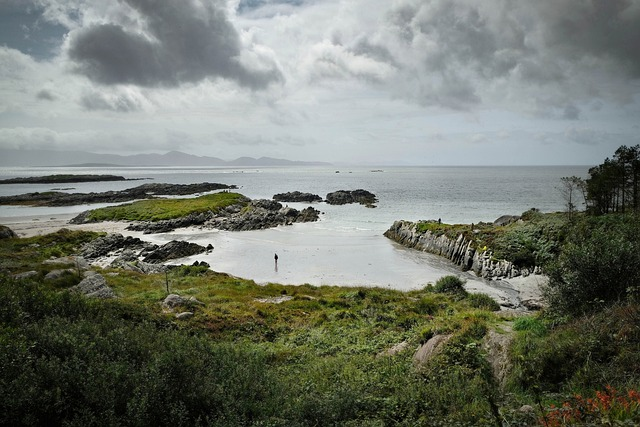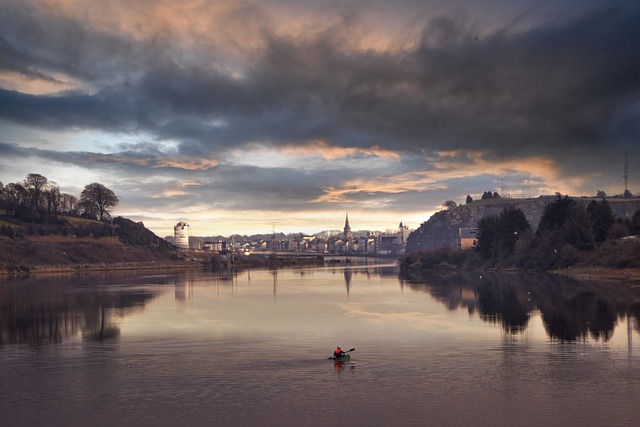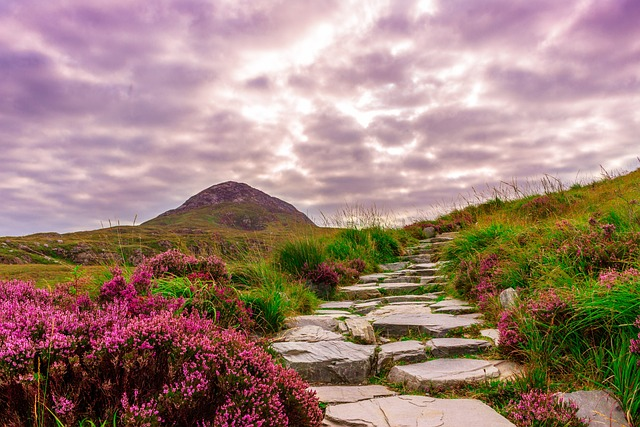Ireland, known for its lush landscapes, rich history, and vibrant culture, is a dream destination for many travelers. However, not every time of the year is ideal for a visit. Understanding the worst times to go to Ireland can help you plan a more enjoyable trip. In this comprehensive guide, we will explore the worst months to visit, weather conditions to avoid, times when outdoor activities are less favorable, peak tourist seasons, specific time to visit ireland events and holidays to steer clear of, and the most challenging times for budget travelers and accommodation availability. We will also provide tips for traveling during these less-than-ideal times.

Worst Months to Visit Ireland
While Ireland's beauty can be appreciated year-round in good weather, some months present more challenges than others. The worst months to visit Ireland typically include:
January
January is often the coldest month in Ireland, with temperatures averaging around 39°F to 47°F (4°C to 8°C). The days are short, and the weather can be quite damp, making outdoor activities less enjoyable. This combination of cold and wet conditions can deter many travelers from fully experiencing the outdoor attractions Ireland has to offer.
Visiting Cork? Here are Best Things to do in Cork Ireland: Awesome Places To Visit, Outdoor Activities to Do
February
Similar to January, February remains cold and wet. While slightly milder, it’s still not the very best time to visit for sightseeing or outdoor adventures. The persistent rain and chilly temperatures can make it difficult to explore Ireland’s beautiful landscapes and historic sites comfortably.
Visiting Dublin? Here are Best Things To Do In Dublin Ireland: In Depth Guide for 2024
November
November marks the beginning of the winter season in Ireland. It is rainy season characterized by shorter days and increased rainfall, making it less appealing for tourists. The frequent rain showers and early sunsets can limit your ability to enjoy outdoor activities and sightseeing.
Visiting Limerick? Here are Best Things to do in Limerick Ireland
These months are marked by harsh, colder weather conditions and limited to longer daylight hours, which can hinder your ability to explore and enjoy the outdoors.

| Worst Time To Visit Ireland | Reason |
|---|---|
| January | Cold temperatures, frequent rain, and strong winds making outdoor activities less enjoyable. |
| February | Harsh weather conditions with short daylight hours and overcast skies. |
| November | Cold and wet weather with shorter days, making sightseeing less pleasant. |
Worst Weather to Visit Ireland
Ireland's weather is notoriously unpredictable, but certain conditions can make travel particularly challenging. The worst weather to visit Ireland includes:
Heavy Rainfall
Ireland is known for its rain, but the heaviest downpours typically occur during low season between October and January. Constant rain during high season can dampen your plans and limit outdoor activities. This persistent wet weather can make sightseeing and exploring the countryside less enjoyable and comfortable.
Cold Temperatures
The winter months (December to February) bring cold weather, with temperatures sometimes dropping to freezing levels, especially in inland areas. The chilly conditions and mild temperatures can make it difficult to enjoy outdoor activities and may necessitate extra preparation and warm clothing.
Stormy Weather
Ireland can experience severe storms, particularly in the winter months. These storms can disrupt travel plans, cause flight cancellations, and make driving hazardous. Strong winds and heavy rain can make outdoor activities and travel less safe and more stressful.
Understanding these weather patterns can help you avoid the worst conditions and plan a more pleasant trip.

Worst Times for Outdoor Activities in Ireland
The worst times for outdoor activities in Ireland are during the winter months, from December to February. These months are characterized by cold temperatures, frequent rain, and shorter daylight hours, which can make outdoor activities like hiking, cycling, and sightseeing less enjoyable and more challenging.
Additionally, severe storms and unpredictable weather during this period can disrupt plans and make outdoor adventures unsafe. For the best experience, it's advisable to plan outdoor activities during the milder and more predictable weather of spring and summer.
Winter Months (December to February)
The winter months are generally the worst time for outdoor activities in Ireland. The cold temperatures, frequent rain, and shorter daylight hours limit your ability to enjoy the country's natural beauty and engage in activities like hiking, cycling, or sightseeing.
Early Spring (March to April)
While the weather starts the fall season seems the perfect weather only to improve in March and April, it can still be unpredictable. Cold snaps and heavy rain showers can make outdoor activities less enjoyable.

Worst Tourist Crowds: When to Avoid Visiting Ireland
Ireland attracts tourists year-round, but certain times see an influx of visitors, leading to crowded attractions and higher prices. Knowing when these peak periods occur can help you plan a more relaxed and enjoyable trip. The two worst times to visit for tourist crowds in Ireland include the summer months and specific holidays such as St. Patrick's Day.
Summer Months (June to August)
The summer months are the most peak season crowds the tourist season in Ireland, bringing a significant increase in visitors. June through August sees the highest influx of tourists, drawn by the relatively warmer weather and long daylight hours. Popular destinations such as Dublin, Galway, the Cliffs of Moher, and the Ring of Kerry become hotspots for large crowds.
Impact on Popular Destinations
-
Dublin: As the capital city, Dublin experiences a surge in tourists during the summer. Key attractions like the Guinness Storehouse, Trinity College, and Temple Bar become crowded, resulting in longer wait times and a more hectic atmosphere. The bustling streets and packed restaurants can make it challenging to enjoy the city’s charm and cultural offerings fully.
-
Galway: Known for its lively arts scene and vibrant festivals, Galway also sees a spike in visitors during the summer. The city's narrow streets can become congested, and popular spots such as the Latin Quarter and Salthill Promenade may feel overcrowded.
-
Cliffs of Moher: One of Ireland’s most iconic natural attractions, the Cliffs of Moher attracts large crowds in the summer. The viewing platforms and walking trails can become packed, detracting from the experience of this breathtaking landscape.
-
Ring of Kerry: This scenic drive is a must-see for many visitors, but during the summer, the roads can be busy with tour buses and rental cars. The high traffic volume can lead to slow travel times and limited opportunities to stop and enjoy the views.
Higher Prices and Limited Accommodation
The peak tourist season also means higher prices for flights, accommodation, and car rentals. Hotels and B&Bs in popular areas book up quickly, often months in advance, leaving late planners with fewer and more expensive options. Dining out can also be more costly due to the increased demand.
St. Patrick's Day (March 17th)
St. Patrick's Day is a major holiday in Ireland, celebrated the entire month with parades, festivals, and various cultural events. While the celebrations are vibrant and exciting, they also draw visitors from around the world, leading to large crowds and a bustling atmosphere.
Dublin's Festivities
Dublin is the epicenter of St. Patrick’s Day celebrations, hosting one of the largest parades in the world. The city becomes a hub of activity with street performances, music, and parties. However, the influx of visitors can be overwhelming. Accommodation prices soar, and availability becomes limited. Popular tourist sites and pubs are packed with revelers, making it difficult fewer tourists to move around the city and enjoy the festivities comfortably.
Other Cities and Towns
While Dublin sees the largest crowds, other cities charming villages, and towns across Ireland also host St. Patrick’s Day celebrations. Places like Cork, Limerick, and Galway attract significant numbers of visitors, leading to crowded streets and busy attractions. Smaller towns, although less crowded, still experience an increase in tourists and may have limited accommodation options.
Tips for Avoiding Tourist Crowds
If you prefer a more relaxed experience, it’s best to avoid these peak tourist times. Consider visiting Ireland during the shoulder seasons of spring (April to May) and autumn (September to October). These periods offer milder and pleasant weather here, fewer crowds, and more affordable prices for accommodation and flights. You can also explore less touristy destinations in Ireland, such as the Burren, the Aran Islands, or the Wicklow Mountains, to enjoy a quieter and more authentic Irish experience.
Planning your trip around these peak tourist times can help you avoid the worst of the crowds, allowing you to fully appreciate Ireland's beauty and charm without the stress of large numbers of visitors.

Worst Specific Events and Holidays to Visit Ireland
Ireland hosts numerous events and holidays that, while culturally significant, can result in large crowds and higher prices. To ensure a more enjoyable and less crowded visit, it's helpful to be aware of these peak times. Here are some specific events and holidays to avoid:
St. Patrick's Day
As previously mentioned, St. Patrick's Day is celebrated with parades, festivals, and large gatherings, especially in Dublin. On March 17th, the city becomes a hub of vibrant celebrations that attract visitors from all over the world. While the festivities are exciting and offer a unique cultural experience, they also lead to packed streets and high accommodation prices. Finding a place to stay during this time can be challenging and expensive. Tourist attractions and local pubs are overflowing with revelers, making it difficult to move around and enjoy the city comfortably.
Christmas and New Year
The holiday season in December is a busy time in Ireland. Many locals travel to visit family, and popular tourist spots see a significant increase in visitors. Christmas markets, festive events, and New Year's celebrations draw crowds, especially in major cities like Dublin, Cork, and Galway. Additionally, some attractions and services may be closed or operate on limited hours during the holidays. Hotels and other accommodations are often fully booked well in advance, and prices are generally higher. The festive atmosphere is charming, but if you prefer a quieter experience, it might be best to avoid traveling during this period.
Bank Holidays
Ireland has several bank holidays throughout the year, including the first Monday in May, June, and August. These long weekends are popular times for locals to take short trips and holidays, leading to an increase in domestic travel. Tourist attractions, hotels, and popular destinations become crowded, and accommodation prices rise. Coastal towns, national parks, and major cities experience a surge in visitors, making it harder to find affordable and available lodging. The increased number of domestic travelers can also mean longer wait times at restaurants and attractions.
Planning Your Trip
To avoid the worst of the crowds and higher prices associated with these specific events and holidays, consider planning your trip around these peak times. Opt for visiting during the shoulder seasons, such as April to May and September to October, when the weather is still pleasant, but the crowds are thinner. Exploring less touristy destinations in Ireland can also provide a more relaxed and authentic experience. Areas like the Burren, the Aran Islands, and the Wicklow Mountains offer stunning landscapes and cultural experiences without the overwhelming crowds.
By being aware of these peak times and planning accordingly, you can enjoy a more peaceful and enjoyable trip to Ireland, experiencing its natural beauty, vibrant cities and rich heritage without the stress of large crowds and high prices.
Worst Seasons for Budget Travelers in Ireland
Ireland can be an expensive destination, especially during peak seasons when prices for flights, accommodation, and attractions surge. For budget-conscious travelers, certain times of the year pose significant challenges to keeping expenses low. The worst seasons for budget travelers include the summer months and the holiday season in December.
Summer (June to August)
The summer months from June to August are the peak tourist season in Ireland. This period sees the highest influx of visitors, drawn by the relatively warmer weather, long daylight hours, and numerous festivals and events. However, with this surge in tourism comes a steep increase in prices across the board.
-
Higher Prices for Flights and Accommodation: During summer, the demand for flights to and from Ireland increases dramatically, leading to higher airfare prices. Similarly, hotels, B&Bs, and vacation rentals often raise their rates due to the high demand. Budget options can become scarce, and even mid-range accommodations can be costly.
-
Increased Attraction and Activity Costs: Popular attractions and activities also tend to be more expensive during the summer. Guided tours, entry fees to landmarks, and prices for activities like boat trips or cultural experiences may rise. Additionally, restaurants and cafes in tourist hotspots might hike their prices, making dining out more expensive.
-
Crowded Conditions: The summer crowds not only impact prices but also the overall experience. Popular sites and attractions can become overcrowded, leading to longer wait times and a less enjoyable visit. The high volume of tourists can also affect public transportation, with buses and trains being more crowded and potentially more expensive.
Holiday Season (December)
The holiday season in December, particularly around Christmas and New Year, is another expensive time to visit Ireland. Many people travel to celebrate the holidays, both domestically and internationally, resulting in increased travel costs and higher accommodation prices.
-
Surge in Flight Prices: Similar to the summer months, the demand for flights increases significantly in December. Travelers heading home for the holidays or taking vacation trips cause airfare prices to spike. Booking flights late can result in even higher costs.
-
High Accommodation Rates: Hotels and other accommodations see a surge in prices during the holiday season. Many budget options are fully booked well in advance, leaving last-minute travelers with fewer and more expensive choices. Additionally, some places require a minimum stay during the festive period, which can further strain a budget.
-
Limited Budget Options: With many budget accommodations booked up, finding affordable lodging can be challenging. Hostels, budget hotels, and cheaper rental options are often unavailable or pricier than usual. Dining out and entertainment options may also be more expensive due to holiday surcharges.
Best Times for Budget Travelers
For budget travelers, the best times to visit Ireland are during the shoulder seasons of spring (April to May) and autumn (September to October). During these periods, prices for flights and accommodation are more reasonable, and there are fewer crowds. The weather is generally mild, making it an ideal time to explore Ireland's stunning landscapes and historic sites without breaking the bank.
Visiting Ireland during these off-peak times allows budget travelers to enjoy the beauty warm hospitality and culture of the country without the financial strain and overcrowded conditions of the peak seasons. By planning your trip strategically, you can experience the best of Ireland while keeping expenses manageable.

Worst Times for Accommodation Availability in Ireland
Finding accommodation in Ireland can be particularly challenging during peak times. The worst times for accommodation availability include:
-
Summer Months (June to August): The high tourist season means that hotels, hostels, and vacation rentals book up quickly. It's essential to book well in advance if you plan to visit during these months.
-
Major Events and Festivals: Events like St. Patrick's Day and the Galway Races in July lead to a surge in visitors, making it difficult to find available accommodation.
-
Bank Holidays: Long weekends and public holidays see an increase in domestic travel, leading to limited accommodation options.
To avoid the stress of finding a place to stay, consider traveling during the two off season-peak months or booking your accommodation well in advance.
Tips for Traveling in Ireland During the Worst Times
If you find yourself needing to travel to Ireland during the less-than-ideal times, here are some tips to make the most of your trip:
-
Plan Ahead: Book your accommodation and flights well in advance to secure the best deals and ensure availability.
-
Pack Appropriately: Bring warm, waterproof clothing and sturdy shoes to prepare for Ireland's unpredictable weather.
-
Flexible Itinerary: Be flexible with your travel plans. Have indoor activities and backup options in case of bad weather.
-
Explore Lesser-Known Areas: Avoid the crowds by exploring less touristy destinations. Ireland has many hidden gems that are just as beautiful and interesting as the popular spots.
-
Embrace the Local Culture: Participate in local events and festivals, even if they are crowded. It can provide a unique and enriching experience.
-
Travel Insurance: Consider purchasing travel insurance to cover any unexpected changes or disruptions to your plans.
By following these tips, you can still have an enjoyable and memorable trip to Ireland, even during the worst times.
FAQs on Worst Time to Go to Ireland
What are the worst months to visit Ireland?
The worst months to visit Ireland are typically January, February, and November due to cold temperatures, heavy rainfall, and limited or short daylight hours.
Why is winter considered the worst time for outdoor activities in Ireland?
Winter in Ireland (December to February) brings cold temperatures, frequent rain, and shorter daylight hours, making outdoor activities less enjoyable and sometimes impractical.
When are the peak tourist crowds in Ireland?
The the peak season for tourist crowds in Ireland occur during the summer months (June to August) and around major holidays such cultural festivals such as St. Patrick's Day in March.
Which events and holidays should travelers avoid in Ireland?
Travelers should avoid St. Patrick's Day in March, the Christmas and New Year holidays in December, and bank holidays throughout the year due to large crowds and higher prices.
What are the worst times for budget travelers in Ireland?
Budget travelers should avoid the summer months (June to August) and the holiday season in December, as these are the cheapest time most expensive times to visit Ireland.
